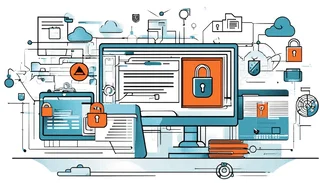Overview of the Cisco 200-301 Exam
The Cisco Certified Network Associate (CCNA) 200-301 exam is a crucial certification for aspiring networking professionals. This exam validates the candidate’s knowledge of networking fundamentals, IP connectivity, security fundamentals, automation, and programmability. It is designed for individuals who want to establish a strong foundation in networking and advance their careers in the IT industry. DumpsBoss provides invaluable study materials, including real exam questions, expert explanations, and practice tests, to help candidates prepare efficiently and pass the Cisco 200-301 exam with confidence.
Definition of an IPv4 Packet Header
An IPv4 packet header is a crucial part of data communication over IP networks. It contains essential information that ensures data is correctly delivered from the source to the destination. The IPv4 header precedes the actual data in a packet and carries control information required for proper packet transmission. This header consists of multiple fields, each playing a specific role in ensuring successful data transmission across the network.
Fields in an IPv4 Header That Change During Transmission
Certain fields in the IPv4 header are dynamic and change as the packet moves through different network devices. These include:
-
Time to Live (TTL) – This field decreases by one at each hop (router) the packet passes through. If it reaches zero, the packet is discarded, preventing infinite loops.
-
Header Checksum – This field is recalculated at every hop to verify the integrity of the header. Any changes to the packet require a new checksum calculation.
-
Total Length – If fragmentation occurs, this field is updated to reflect the new size of the packet.
-
Flags and Fragment Offset – If a packet is fragmented, the flag and offset fields are modified to indicate fragmentation and reassembly instructions.
-
Identification – When a packet is fragmented, each fragment gets the same identification number for proper reassembly at the destination.
Understanding these changing fields is crucial for network engineers, as they directly impact packet forwarding, routing, and security mechanisms.
Fields in an IPv4 Header That Remain the Same During Transmission
While some fields change, others remain static throughout the transmission process. These include:
-
Source IP Address – The IP address of the sending device remains unchanged throughout the journey.
-
Destination IP Address – The recipient’s IP address remains constant, ensuring correct delivery.
-
Protocol – This field indicates the transport layer protocol (e.g., TCP, UDP) and remains unchanged.
-
Version – This field specifies the IP version (IPv4) and does not change.
-
Differentiated Services (DSCP) – Specifies priority handling for Quality of Service (QoS) and remains constant.
These static fields help maintain proper routing and ensure packets reach their intended destination correctly.
Why These Fields Matter in Networking
The IPv4 header fields play a critical role in networking by enabling efficient routing, security, and traffic management. Understanding these fields helps network engineers troubleshoot connectivity issues, optimize network performance, and enhance security. Some key reasons why these fields are essential include:
-
Efficient Routing – Fields like the TTL and fragmentation indicators assist routers in handling packets effectively.
-
Security – Examining header fields helps detect malicious activities like IP spoofing and DoS attacks.
-
Network Optimization – Proper use of the DSCP field helps in QoS implementation, ensuring critical data gets priority.
Having a deep understanding of IPv4 headers allows IT professionals to configure, secure, and maintain networks efficiently.
Importance in Cisco 200-301 Exam
The Cisco 200-301 exam extensively covers networking concepts, including IPv4 packet structures. Exam candidates must be proficient in:
-
Identifying IPv4 header fields and their functions.
-
Understanding how fields change during transmission.
-
Troubleshooting network issues based on packet analysis.
-
Implementing security measures using header field knowledge.
DumpsBoss provides comprehensive study materials, including real exam dumps, expert-curated practice tests, and detailed explanations. With DumpsBoss, candidates can gain in-depth knowledge of IPv4 headers and other crucial networking topics, significantly increasing their chances of passing the Cisco 200-301 exam on the first attempt.
Conclusion
The IPv4 packet header is a fundamental concept in networking, playing a crucial role in data transmission, routing, and security. The Cisco 200-301 exam assesses a candidate’s understanding of IPv4 headers and their impact on networking. Mastering these concepts is essential for aspiring network professionals. By leveraging DumpsBoss resources, candidates can enhance their understanding, practice real exam scenarios, and confidently pass the certification exam, paving the way for a successful career in networking.
Special Discount: Offer Valid For Limited Time “200-301 Exam” Order Now!
Sample Questions for Cisco 200-301 Dumps
Actual exam question from Cisco 200-301 Exam.
Which field in an IPv4 packet header will typically stay the same during its transmission?
A) Time to Live (TTL)
B) Header Checksum
C) Source IP Address
D) Total Length


